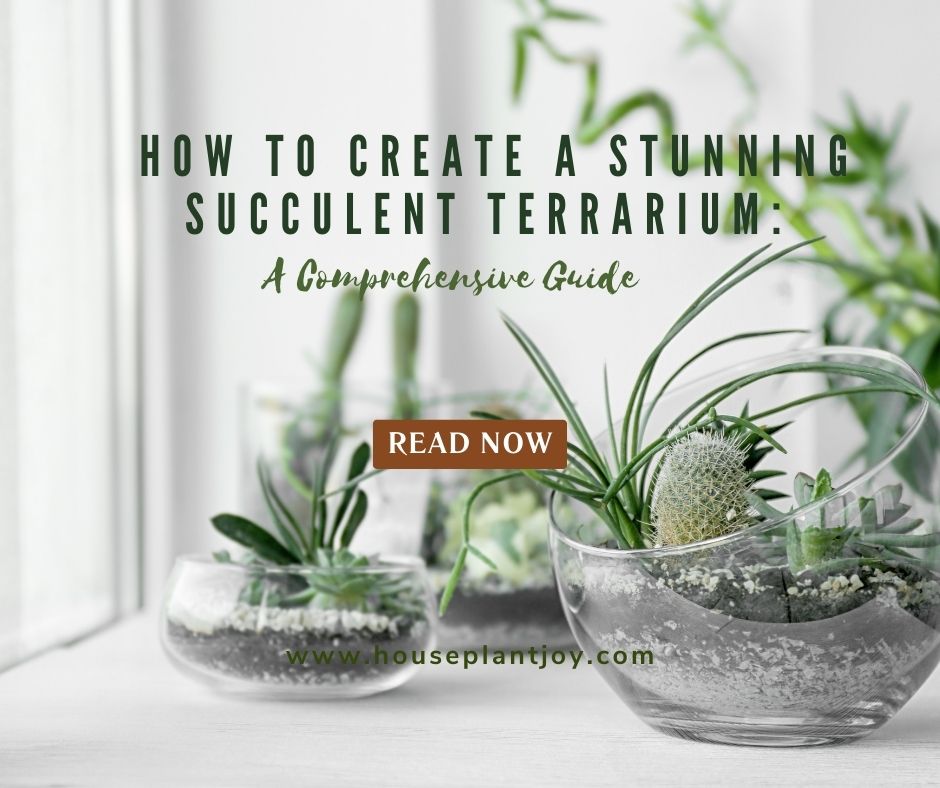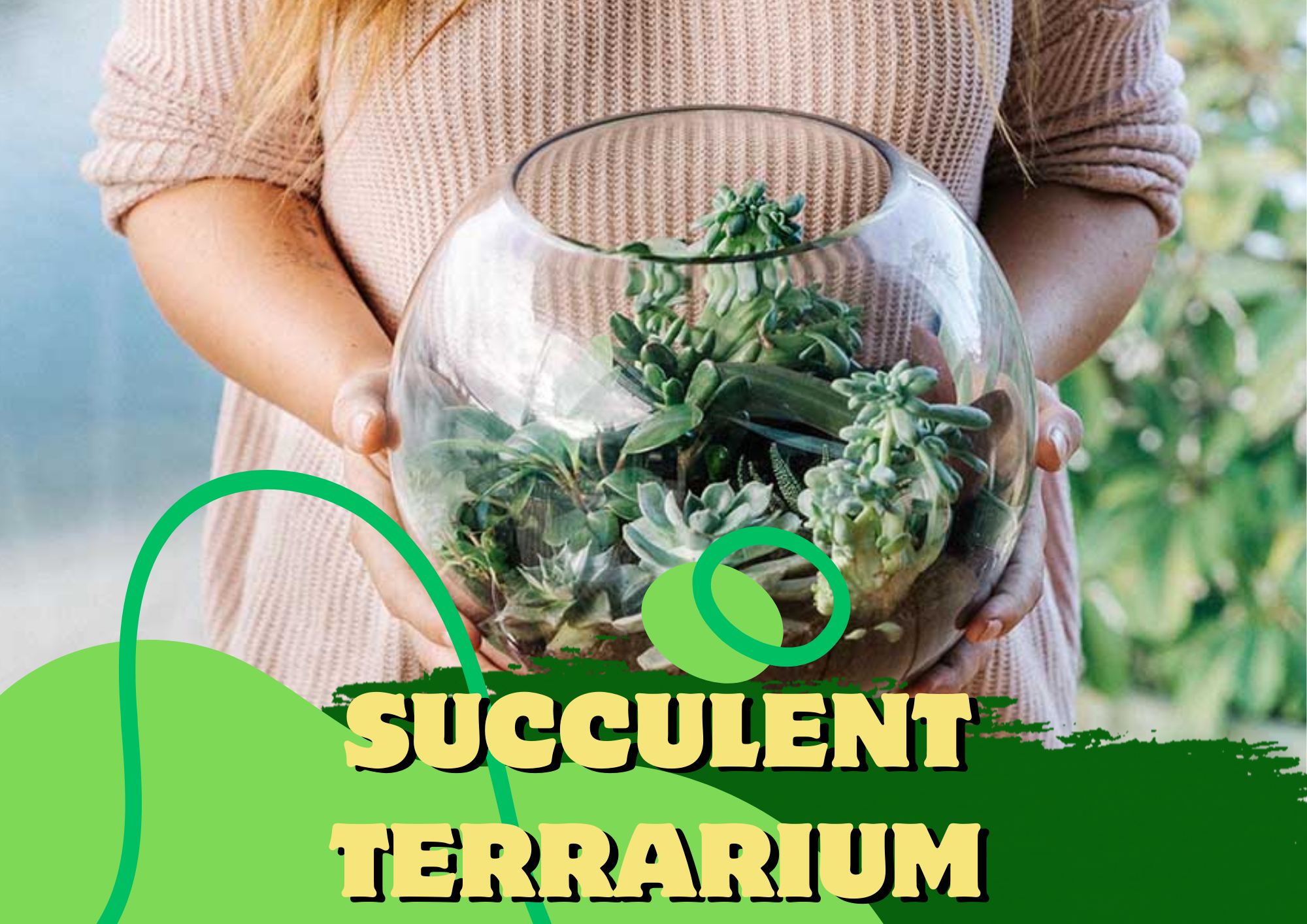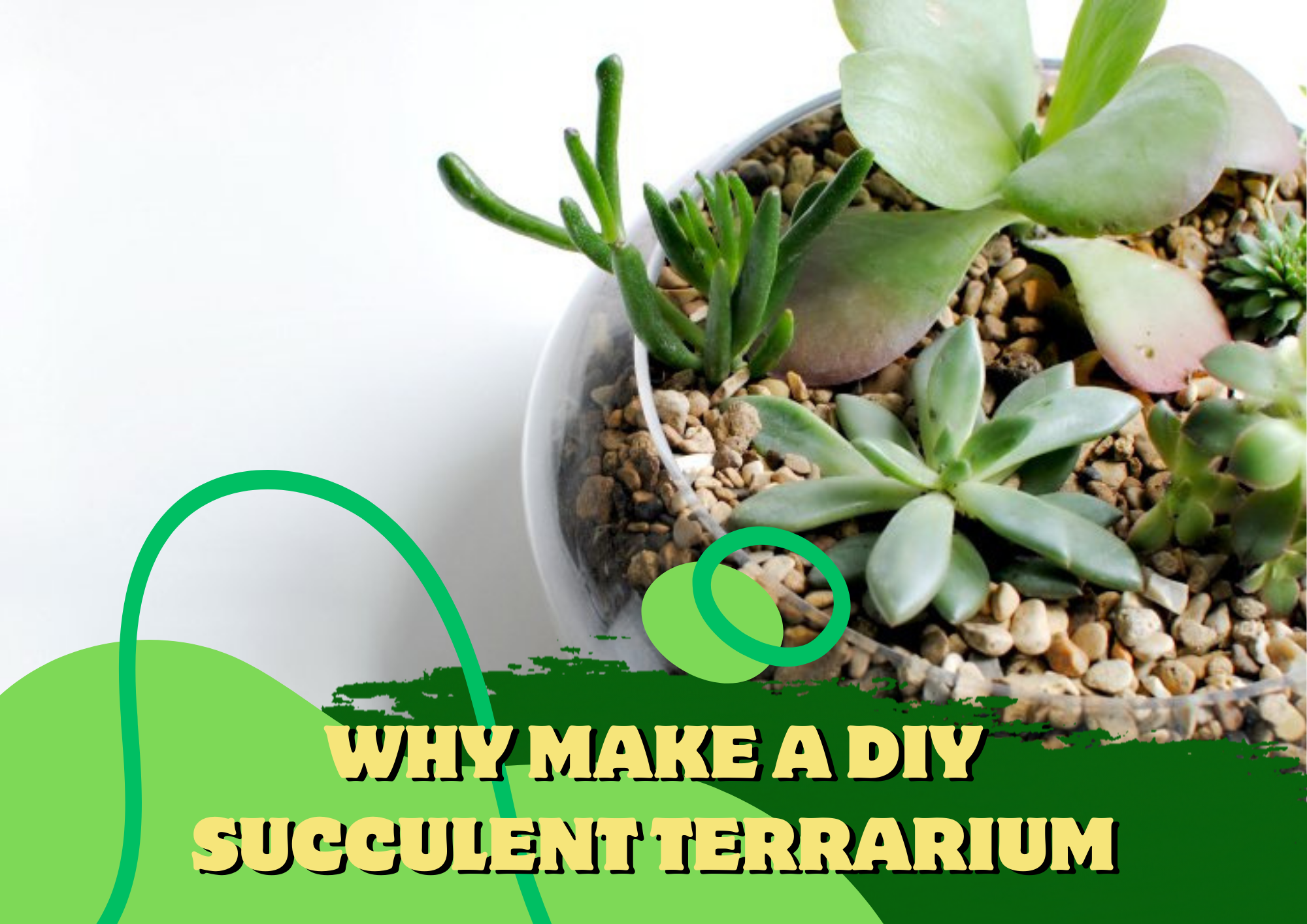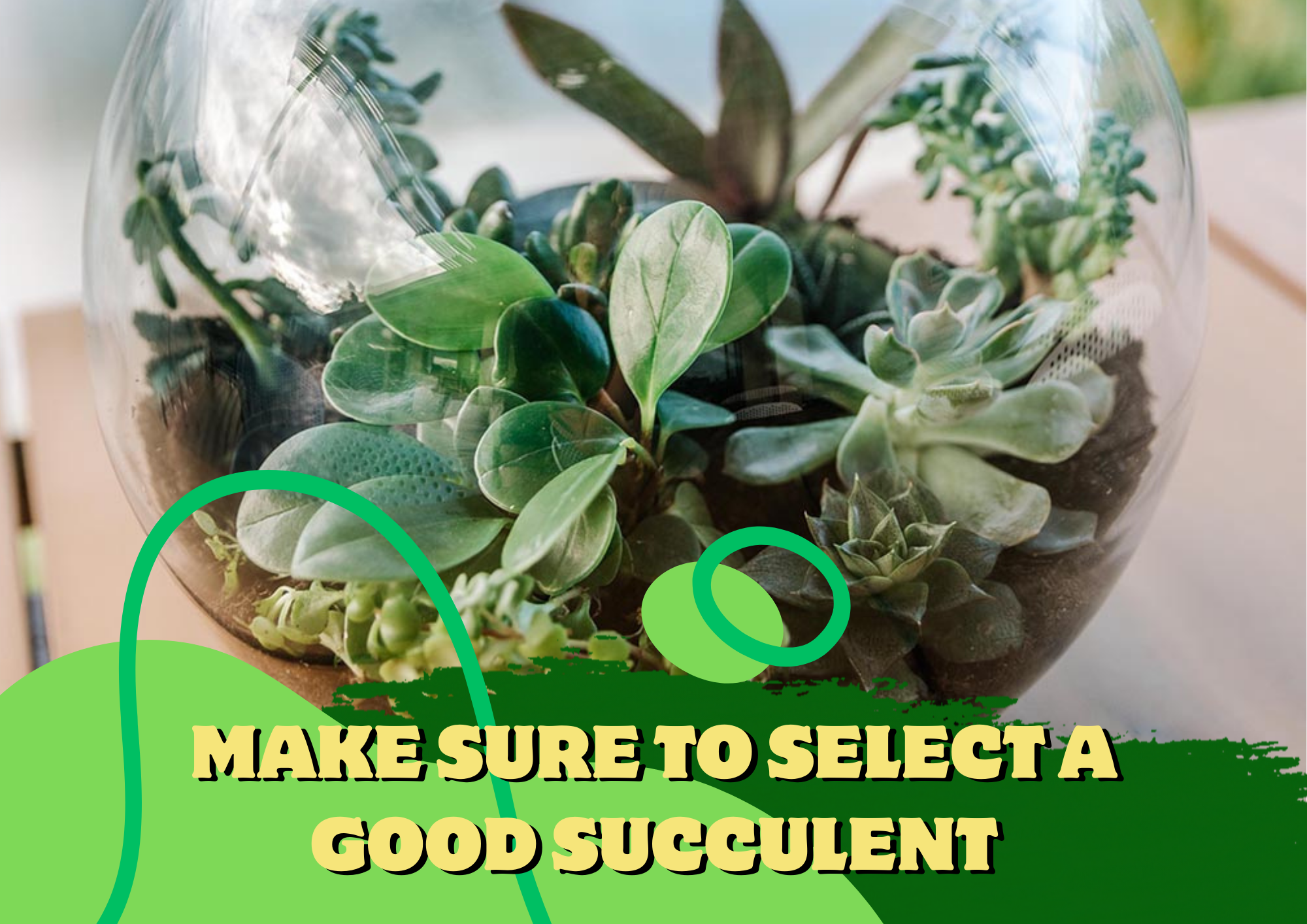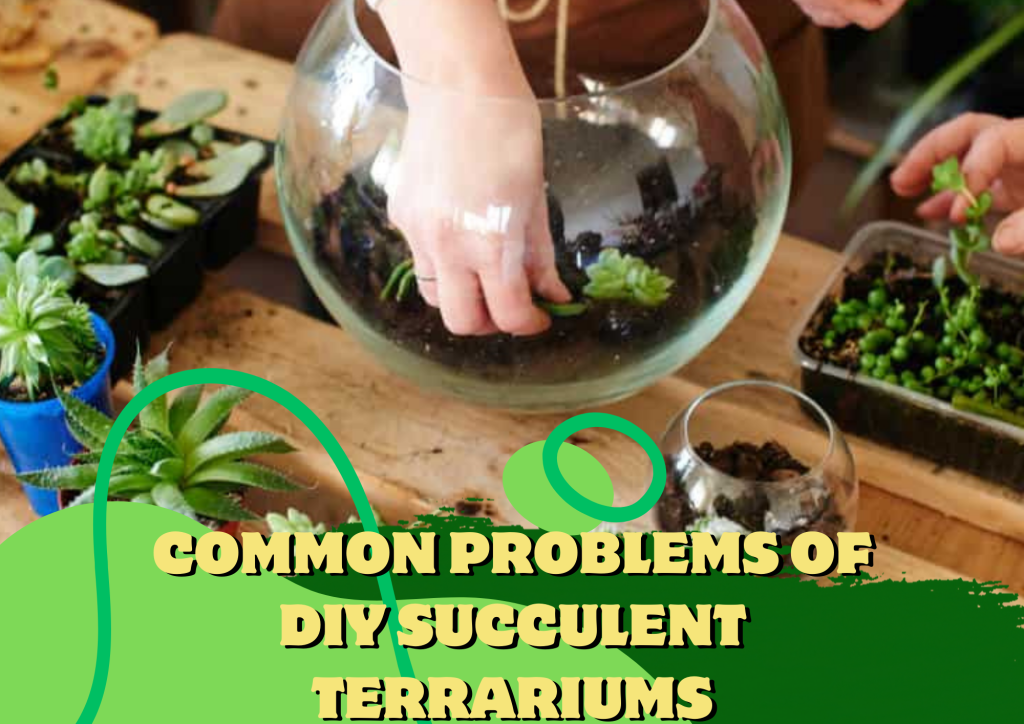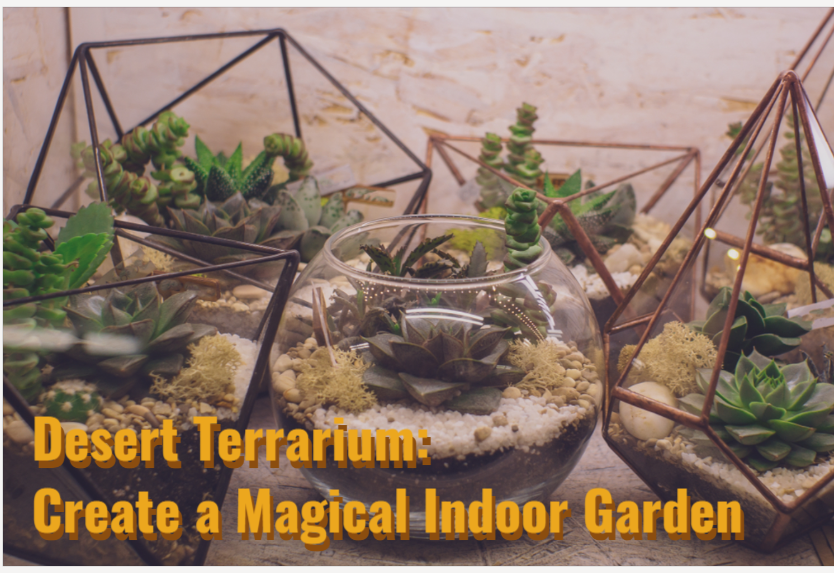HousePlantJoy is supported by our audience. When you purchase through one of our links, we may earn a small affiliate commission. As an Amazon Associate I earn from qualifying purchases. Your cost is not affected.
==================
Succulent terrariums have caught the gardening world by storm lately, and it’s no surprise. Why? These little wonders don’t just bring a dash of nature indoors; they also craft a gorgeous miniature ecosystem that’s all your own. If you’re on the hunt for a pocket-friendly DIY venture that blends creativity and organic charm, crafting your succulent terrarium is the way to go.
I’m thrilled to be your guide today as we embark on this adventure. We’ve got a step-by-step journey planned for you, from handpicking the perfect succulents to ensuring your terrarium stays happy and healthy. So, let’s begin creating a stunning succulent terrarium, shall we?
Why Make a DIY Succulent Terrarium
Creating your DIY succulent terrarium is an absolute blast and the best part? It’s a piece of cake. Succulents are like the chill, low-maintenance heroes of the plant world. They’re the dream plants for people who aren’t precisely plant whisperers.
What’s super cool is that you get to be the designer here. You choose the container, the desired succulent, and whatever decorations you fancy. Your terrarium becomes this mini-green wonderland in your home – it’s like bringing a piece of the great outdoors indoors. But it’s not just about looks; these terrariums are like self-sustaining worlds. They mimic nature’s water cycle, and watching them work their magic is mesmerizing.
And here’s the bonus: it’s easy on the wallet and perfect for a family project. Gardening is soothing, and taking care of your succulent terrarium can be like a therapeutic escape. So, if you’re after a relaxed, creative way to add a splash of nature to your life, making a DIY succulent terrarium is the way to go.
Source: texasfarmbureau
Discover stylish terrariums for your succulents – we’re here to help your garden thrive! #Ads #CommissionsEarned #GardenLove ??
Make Sure to Select A Good Succulent
When you start making your terrarium, the first thing to do is pick the plants. A lot of terrarium enthusiasts love using succulents. They’re tough, need little care, and come in fantastic shapes and textures. Succulents are a perfect fit for your terrarium and are super simple to work with.
Succulent terrariums are like a blank canvas waiting for your ideas. Depending on the container, plants, and any decorations you like, you can make it look however you want. This project is so easy that even kids with a gentle touch can join in the fun.
Selecting the Perfect Succulents
Before you start assembling your succulent terrarium, choosing the right plants for your project is important. Succulents are ideal for terrariums because they are hardy, low-maintenance, and come in various textures and shapes. When selecting your succulents, consider their size, growth habit, and color to create a visually appealing arrangement. It’s also essential to ensure that the succulents you choose are compatible with each other regarding their watering and light requirements. Here are some popular succulent varieties to consider:
Echeveria: Known for their rosette-shaped leaves and vibrant colors, Echeverias are a popular choice for succulent terrariums.
Haworthia: These small, spiky succulents are perfect for adding texture and variety to your terrarium.
Sedum: With their trailing growth habit, Sedums are great for cascading down the sides of your terrarium.
Crassula: Also known as Jade Plants, Crassulas are versatile succulents in various shapes and sizes.
Gathering Supplies
Before you begin building your succulent terrarium, gather all the necessary supplies. Here’s a list of items you’ll need:
Glass container: Choose a clear glass container with an opening, such as a fishbowl or a glass jar. Make sure it has enough room for the plants and soil.
Gravel or pebbles: Use gravel or pebbles to create a drainage layer at the bottom of your terrarium. This will prevent water from pooling and causing root rot.
Charcoal or perlite: Adding a layer of charcoal or perlite on top of the gravel will help absorb excess moisture and prevent odors.
Potting mix: Use a well-draining mix formulated explicitly for succulents or cacti.
Succulents: Select a variety of succulents that suit your aesthetic preferences and the size of your terrarium.
Decorative accents: Optional decorative elements, such as rocks, moss, or figurines, can add a personal touch to your terrarium.
Building Your Succulent Terrarium
Now that you have all your supplies ready, it’s time to start building your succulent terrarium. Follow these step-by-step instructions:
Step 1: Prepare the container: Clean the glass container thoroughly to remove any dirt or residue. Ensure that it is dry before proceeding.
Step 2: Create a drainage layer: Add a layer of gravel or pebbles to the bottom of the container. This will allow excess water to drain away from the roots of the succulents.
Step 3: Add a layer of charcoal or perlite: Place a layer of charcoal or perlite on top of the gravel. This layer will help absorb excess moisture and prevent any unpleasant odors.
Step 4: Layer the potting mix: Add a well-draining mix layerPlease make sureyour supplies are on top of the charcoal or perlite. The depth of the soil layer will depend on the size of your container, but aim for at least 1-2 inches.
Step 5: Plant the succulents: Carefully remove them from their pots and loosen the roots. Create small holes in the soil and gently place the succulents in their desired positions. Fill the gaps with additional potting mix and press firmly to secure the plants.
Step 6: Add decorative accents: If desired, add decorative accents such as rocks, moss, or figurines to enhance the visual appeal of your terrarium.
Step 7: Water sparingly: Give your terrarium a light misting of water using a spray bottle. Be careful not to overwater, as succulents prefer dry conditions. Allow the soil to dry out between waterings.
Caring for Your Succulent Terrarium
Proper care is essential for the health and longevity of your succulent terrarium. Here are some tips to ensure your terrarium thrives:
Light: Place your terrarium in a location that receives bright, indirect sunlight. Avoid placing it in direct sunlight, which can cause the plants to burn.
Watering: Succulents have low water needs and prefer to dry out between waterings. Water sparingly, allowing the soil to dry out completely before watering again. Avoid overwatering, as this can lead to root rot.
Ventilation: While succulent terrariums create a humid environment, it’s essential to provide some airflow to prevent excessive moisture buildup. Open or remove the lid temporarily every few weeks to allow fresh air to circulate.
Pruning: Remove dead or wilted leaves from your succulents to promote healthy growth. Additionally, trim back any overgrown succulents to maintain the desired shape and size.
Fertilizing: Succulents have low nutrient requirements and can survive without regular fertilization. However, if desired, you can fertilize your terrarium once or twice a year using a diluted succulent fertilizer.
Customizing Your Succulent Terrarium
One of the joys of creating a succulent terrarium is the opportunity to customize it to fit your style. Here are some ideas to add a unique touch to your terrarium:
Colorful accents: Add colored sand or decorative rocks in various hues to create a visually striking terrarium.
Fairy garden theme: Incorporate miniature figurines, fairy lights, and tiny accessories to create a whimsical fairy garden terrarium.
Vertical terrarium: If you have limited space, opt for a hanging or wall-mounted terrarium to create a vertical garden display.
Air plants: Mix plants with succulents to add an ethereal and unique element to your terrarium.
Seasonal decorations: Switch up the decor in your terrarium to match different seasons or holidays. Add small pumpkins for fall or miniature ornaments for Christmas.
Troubleshooting Common Issues
Even with proper care, succulent terrariums can sometimes encounter problems. Here are some common issues and how to address them:
Overwatering: If you notice your succulents becoming mushy or the leaves turning yellow, it’s a sign of overwatering. Reduce watering frequency and ensure the soil has adequate drainage.
Underwatering: If your succulents appear shriveled or the leaves are wrinkled, it may indicate underwatering. Increase watering frequency, but always allow the soil to dry out between waterings.
Pest infestation: Look for common pests such as mealybugs or aphids. If you spot any pests, remove them manually or use an organic insecticidal soap to control the infestation.
Leggy growth: If your succulents are stretching toward the light and becoming leggy, they are not receiving enough sunlight. You can move your terrarium to a brighter location or provide supplemental artificial light.
Common Problems of DIY Succulent Terrariums
When diving into the world of DIY succulent terrariums, you might run into a few hiccups along the way. Here are the common problems you could encounter and some friendly advice on how to deal with them:
Overwatering
Succulents are pretty chill but can’t stand having their roots soaked all the time. So, if you’re giving them a bit too much love in the form of water, you might end up with soggy succulents and root rot. Make sure your container has good drainage and water sparingly.
Container Choice
Not all containers are born equal for succulents. If your chosen vessel doesn’t let excess water escape, it can trap moisture and lead to mold and other problems. So, go for a container with drainage holes.
Succulent Selection
Some succulents are more challenging and can stick but are cookies than others. If you mix and match types with different care needs in one terrarium, you might find suitable succulents struggling. Stick to varieties with similar care requirements.
Light Levels
Succulents need their sunshine, but they’re not fans of direct, scorching rays. If they don’t get enough light, they can get leggy and lose their vibrant colors. Find that sweet spot with bright, indirect sunlight.
Soil Woes
The right soil is crucial. Succulents need well-draining soil to stay happy. Regular potting soil is a no-no, so opt for something specifically formulated for succulents.
Maintenance
Even low-maintenance succulents need a little love. Neglecting dead leaves pests or not repotting when required can lead to trouble. Keep an eye on your mini-garden.
Crowded House
Pack only a few succulents into your terrarium. They need their space, light, and nutrients. Overcrowding can lead to weak growth and issues.
Pest Problems
Sometimes, succulents can attract unwanted guests like aphids or mealybugs. Keep a lookout and take action if you spot these critters.
Succulent-Specific Care
Different succulents have different preferences. Make sure you understand what your succulents need.
Seasonal Shifts
Succulents may have different needs at various times of the year, so be ready to adjust your care routine.
One more time, dive into these chic terrarium options for your succulents, and let us elevate your garden’s allure! #Ads #CommissionsEarned #GardenEnthusiasts ??
Create Your Succulent Terrarium Now
Creating a succulent terrarium is a fun and rewarding DIY project and a beautiful way to incorporate nature into your indoor space. By following the steps outlined in this guide, you can create a stunning terrarium that will thrive with minimal care.
Remember to select the right succulents, gather the necessary supplies, and provide proper care to ensure the longevity of your terrarium. Get creative with customization options and troubleshoot any issues that may arise. Enjoy the beauty and tranquility of your succulent terrarium, and let your green thumb shine!
FAQs
Can I use a closed container for my succulent terrarium?
It is generally not recommended to use a closed container for succulent terrariums, as the high humidity can cause the plants to rot. Open containers allow for better airflow and prevent excess moisture buildup.
How often should I water my succulent terrarium?
Succulent terrariums should be watered sparingly, allowing the soil to dry out completely between waterings. As a general guideline, water every 1-2 weeks, adjusting based on the specific needs of your plants and the environment.
Can I use regular potting soil for my succulent terrarium?
Regular potting soil tends to retain too much moisture for succulents. It’s best to use a well-draining potting mix specifically formulated for succulents or cacti.
How do I propagate succulents in my terrarium?
Propagating succulents in your terrarium is possible. Simply take a healthy leaf or stem cutting from an existing succulent, allow it to callous over for a few days, and then place it directly into the soil in your terrarium. Keep the soil lightly moist until roots develop.
? Discover Your Green Thumb with DIY Succulent Terrariums! ?
Looking for a fun and easy way to bring the beauty of nature into your home? Dive into the world of DIY succulent terrariums!
? Why Choose DIY Succulent Terrariums? ?
✅ Low Maintenance: Perfect for beginners and busy plant lovers.
✅ Unleash Your Creativity: Design your mini oasis, your way!
✅ Indoor Greenery: Spruce up your space with vibrant, living decor.
✅ Stress Relief: Gardening is therapeutic, and succulents are the ultimate chill companions. ✅ Family Fun: A fantastic project for all ages – quality time with a dash of green!
? Get Started Today! ? Follow our socials:
Whether you’re a seasoned gardener or a newbie to the plant world, succulent terrariums are the ultimate DIY project. Create your mini masterpiece and enjoy the soothing benefits of tending to your own little green paradise.

